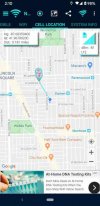Ignoring cell tower and service provider differences, what are the "best" cellphones to own in areas with poor cell coverage? Realizing there are differences in CDMA and GSM, if the phone has reception differences in one format versus another please note that. I am also curious about cellphones that people may import from not-USA markets that might be a good option.
In my case, a satellite phone is not a viable option primarily because of the significant cost. In the past I have owned both CDMA and GSM phones and I have lived in different parts of the USA so, I also realize there is really no substitute for better cell tower coverage. In Europe, I generally found superior cell tower and signal coverage so, with regards to foreign phones I'm thinking primarily of the Asian Pacific region mainly but, other areas like Africa or Australia may be enlightening as well.
In my case, I live in a 'fringe' area of Texas and travel to Oklahoma very often so, I frequently lose coverage, hitting 'dead zones' which can problematic at times and just a minor annoyance on a personal call. I have owned OnePlus, Apple and, Samsung Galaxy phones exclusively for the past decade or more so, in general, that may bias my views a bit and let me miss hidden gems from other companies.
The only other random though that occasionally hits is possibly a cellphone that supports an external high gain antenna that might be reasonable to use with a car or pickup. What is everyone using that is stuck in a 'fringe' area?
TIA,
Sid
In my case, a satellite phone is not a viable option primarily because of the significant cost. In the past I have owned both CDMA and GSM phones and I have lived in different parts of the USA so, I also realize there is really no substitute for better cell tower coverage. In Europe, I generally found superior cell tower and signal coverage so, with regards to foreign phones I'm thinking primarily of the Asian Pacific region mainly but, other areas like Africa or Australia may be enlightening as well.
In my case, I live in a 'fringe' area of Texas and travel to Oklahoma very often so, I frequently lose coverage, hitting 'dead zones' which can problematic at times and just a minor annoyance on a personal call. I have owned OnePlus, Apple and, Samsung Galaxy phones exclusively for the past decade or more so, in general, that may bias my views a bit and let me miss hidden gems from other companies.
The only other random though that occasionally hits is possibly a cellphone that supports an external high gain antenna that might be reasonable to use with a car or pickup. What is everyone using that is stuck in a 'fringe' area?
TIA,
Sid


